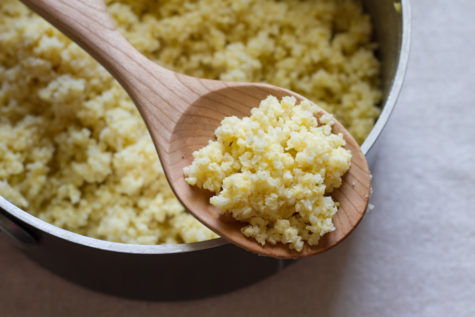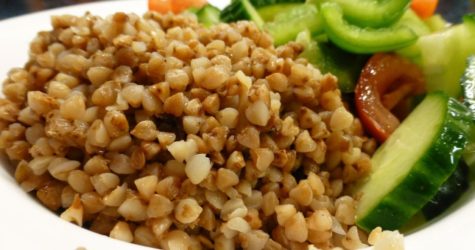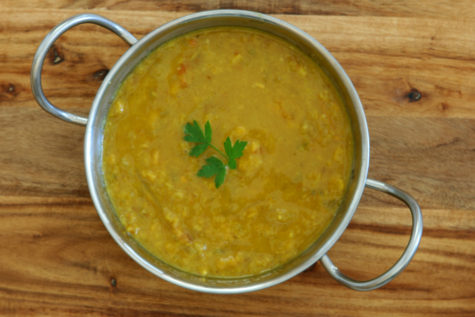Grain
Simple Cooked Millet
While it’s often called a grain because of it’s grain-like consistency, millet is actually a seed. Millet has a thin kernel wall that can be cooked without soaking. For best results, add to boiling water to cook thoroughly.
- 1 cup millet
- 3 cups water
- ⅛ tsp sea salt
Procedure – Wash and drain millet. Bring water to a boil. Add sea salt, then millet. Cover. Return to a boil. Simmer over low heat for 25 to 30 minutes, using a heat diffuser if needed.
Yield: 4 cups
Source: Ohsawa Macrobiotics
Simple Cooked Buckwheat
Buckwheat is a hearty delicious grain and simple to prepare. It requires no washing or soaking. Roasting improves its flavor. Kasha sold in natural food stores is buckwheat that has already been roasted; it can be cooked by adding to boiling water.
- 2 cups buckwheat
- 4 cups water
- ⅛ tsp sea salt
Dry roast buckwheat for 3 to 4 minutes until fragrant, add to boiling water, and simmer 25 minutes.
Yield: 7 cups
Source: Ohsawa Macrobiotics
Pressure Cooked Brown Rice
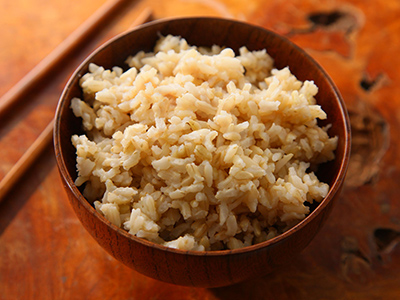
Soaking is recommended before cooking brown rice. If there is no time to soak, roast first. Roasting inactivates the enzyme inhibitors, boosts flavor, and produces a light and fluffy dish. These instructions are for a 2-quart pressure cooker. If using a 4-6 quart cooker, double the amounts.
- 2 cups short or long grain brown rice
- 2.5 to 3 cups water
- ⅛ tsp sea salt
Procedure – Wash and drain grain. Soak for the desired time in the full quantity of water. Add sea salt after soaking. Lock cover on pot. Set pressure according to pressure cooker instructions. Place cooker over medium-high heat. Bring to full pressure. Slip a heat diffuser under the cooker and turn heat to low. Cook at full pressure for the time indicated.
Yield: 6 cups for short rice; 6½ cups for long rice
Source: Ohsawa Macrobiotics
Boiled Brown Rice
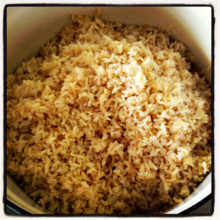 Brown rice (short or long grain) is a staple for many people who eat natural foods. Simple to prepare and complementary to most beans and vegetables, brown rice provides a foundation for building meals. Soaking is recommended before cooking brown rice. If there is no time to soak, roast first. Roasting inactivates the enzyme inhibitors, boosts flavor, and produces a light and fluffy dish.
Brown rice (short or long grain) is a staple for many people who eat natural foods. Simple to prepare and complementary to most beans and vegetables, brown rice provides a foundation for building meals. Soaking is recommended before cooking brown rice. If there is no time to soak, roast first. Roasting inactivates the enzyme inhibitors, boosts flavor, and produces a light and fluffy dish.
Ingredients:
- 2 cups brown rice
- 4 cups water
- ⅛ tsp sea salt
Procedure – Wash and drain brown rice. Soak 4 to 8 hours. Add sea salt after soaking. Cover. Bring to a boil. Simmer over low heat for 1 hour, using a heat diffuser if needed.
Yield: 6 cups for short rice, 6½ cups for long rice
Source: Ohsawa Macrobiotics
Kitchari
Traditional Indian food for soothing diets. Nutritious and easily digested, Kitchari is simply rice and dahl cooked so thoroughly together that they make a creamy stew. This makes a good soup for an evening supper or a light meal while fasting. Total cooking time about 1 1/2 hours.
Ingredients:
- 1/4 cup mung lentils, cleaned and washed
- 1 1/2 cup water
- 1 teaspoon salt
- 1 teaspoon Vata Churna
- 1/4 cup rice
- 2 tablespoons ghee
- 1 1/4 cup water
- 1/4 teaspoon saffron (optional)
- 1 tablespoon ghee
- 1 teaspoon cumin
- 1 teaspoon mustard seeds
Bring water to a boil in a 2 quart pan. Add lentils, salt, and Churna. Cover and bring back to a boil, then reduce heat to ver low and simmer for about an hour.
Add rice, ghee, water, and saffron. Increase heat and bring to boil again. Then reduce to low and simmer for half an hour. Stir frequently to avoid sticking and add more water if it becomes too thick. Khichari should have the consistency of thick gravy. When ready to serve heat ghee in small pan with spices. When mustard seeds start to pop stir spices into Khichari and serve.
Serves 2 or 3
Source: The Ayurveda Cookbook
